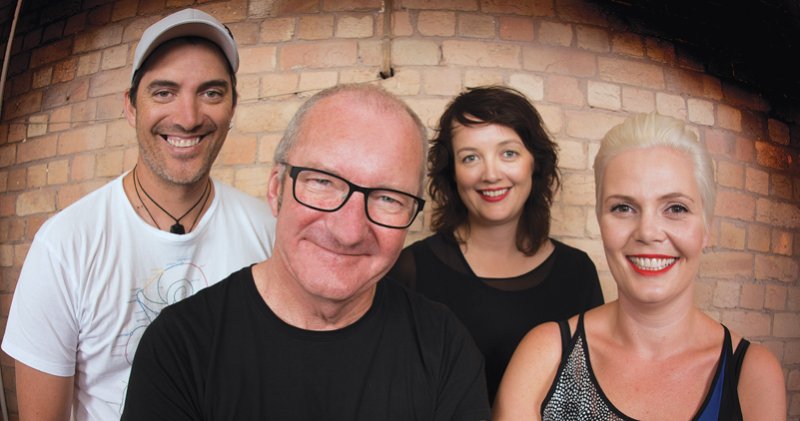NZ On Air Turns 25
NZ On Air Turns 25
25 Years is a real milestone in any organisation (we should know, right?) and NZ Musician is pleased to take this chance to acknowledge the importance and value of NZ On Air to so many aspects of our music industry since its inception in 1989.
It’s literally impossible to picture what the local music landscape may have looked like in 2014 without the financial attention it has received from NZ On Air over the last two decades. Inevitably things would be considerably bleaker. While there still would have been the odd Supergroove, Pauly Fuemana or even Lorde-like champion that snuck through to find success across the globe, there would be nothing like the pyramid base of export-potential achievers we have enjoyed.
At latest count NZ On Air have funded the making of 3,200+ music videos, 222 albums and more than 1600 singles. In so doing the organsation has all but directly provided employment and opportunities for a multitude of related professionals. Any conversation about NZ On Air’s various radio and music schemes inevitably, of course, involves Brendan Smyth, who has been both architect and driver. A quarter century of NZ On Air also means 25 years of his tenure, and we mark that very considerable contribution in a separate Q&A.
1989-90
As the incumbent Music Manager for the QEII Arts Council, Brendan Smyth was a shoe-in for a key role in the newly created NZ On Air (officially-named Broadcast Commission) which kicked into action in July 1989, one result of the newly enacted Broadcasting Act. His new position was Radio Manager, a department of one. 1989 was also the year that the Lange Government free-market reforms led to the deregulation of NZ radio, and TV3 arrived as the country’s first privately owned tele channel.
“When [we] started NZ On Air had two divisions, television and radio – and I was employed as Radio Manager. My job was National Radio and Concert FM, Access radio, Maori radio, signal coverage, radio archiving and, ‘Oh, when you have time, getting NZ music played on the radio’.” – Brendan Smyth
1991
With NZ music taking up less than 2% of commercial radio’s time, in July 1991 NZ On Air launched two initiatives to promote NZ music on radio and television, the schemes later known as ‘Phase One’. The funding of radio programmes – which Brendan still describes as being “…like little oases of NZ music on commercial radio – began with Counting The Beat, which aired on 91FM in Takapuna. A budget of $200,000 was allocated to the production of such programmes.
The very first NZ On Air-funded video was for Moana & The Moahunters’ hit song AEIOU, and unofficial credit for the scheme’s conception lies with Murray Cammick in his role as co-founder of Southside Records. The amount of funding per video was likewise determined by the market. Brendan says he asked Pagan Records’ boss Trevor Reekie what was the most, and the least, he had spent on a music video to date. Reekie’s answer was $10,000 and $10 – and so it became $5000 – initially on a 50/50 matching formula with the record companies.
“We were at a music conference at The Sheraton when Murray [Cammick] asked me, ‘Do you guys fund music videos?’ I said, ‘I don’t know’, meaning, ‘It’s all brand new and we’re making it up as we go along,’ kind of thing. ‘Oh’, he said, ‘well don’t worry, I’ve applied anyway…’ So I then did some research with broadcasters and record company people and figured out a way that we could do it, and proposed the scheme to the [NZ On Air] board.” – Brendan Smyth
1992
Within 12 months NZ On Air had funded 56 music videos under the Music Video Funding Scheme, which had an annual budget of $150,000. The 50/50 sharing requirement was soon dropped as indie labels couldn’t hope to regularly match NZ On Air’s funding power.
“The smaller indies were saying, ‘We’ve got two and sixpence,’ and suggesting that together we make a five bob video!” Brendan jokes. “But that seemed to me to be the wrong outcome – we were trying to get the quality of videos up, that was the point of the intervention. If we insisted on the matched funding principle then we would only be doing business with the majors and that was the wrong outcome as well.”
Student radio got in on the funding fun with $170,000 allocated for programmes on the six stations over the next year. A series of 30-minute radio shows focusing on recent album releases, called Inside Track was also funded for broadcast across all the student radio stations. The first episode of Shortland St screened in May, and in July Mai FM went to air.
1993
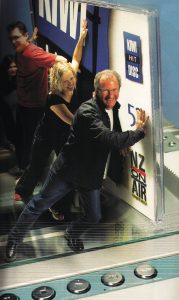 Phase Two brought some quite aggressive radio ‘interventions’, one of which endures two decades on. The Radio Hits scheme reimbursed record companies for the costs of recording and releasing singles (up to $5000) if the song achieved ‘significant airplay’ on commercial radio.
Phase Two brought some quite aggressive radio ‘interventions’, one of which endures two decades on. The Radio Hits scheme reimbursed record companies for the costs of recording and releasing singles (up to $5000) if the song achieved ‘significant airplay’ on commercial radio.
“If we funded the recording of a song and it didn’t get played on the radio that would have betrayed our mandate – and there was no guarantee a song would get airplay. The Radio Hits scheme was devised as a way around that. The record company took the risk, but success would be rewarded. I reckon it was a clever funding scheme. It turned the arts funding model on its head and people loved it.” – Brendan Smyth
In June, the first Kiwi Hit Disc was supplied to every radio station in the country. It was a concept modelled on the American ‘hit disc’ compilations of new releases that the international major labels bought track space on. Some stations had walls of them. Initially just four Auckland stations, 91FM, 89X, Radio Hauraki and Mai FM were used as ‘barometer’ stations to gauge playlist potential. Awkwardly 89X shut down the week before the schemes launched and 91FM changed format, so the panel was expanded to include stations in Wellington, Christchurch and Dunedin. Deepgrooves enjoyed the most tracks per label.
1996
In May NZ On Air were trumpeting that the organisation had ‘joined the web!’ The first of three Kiwi Gold Disc collections was released. Kiwi Gold Disc I was a five-CD set spanning the big local hits from the 25 years 1965 – 1990. They were companions to NZ On Air’s regular Kiwi Hit Disc new music compilations, designed to ensure that all radio stations had a diverse NZ music library on hand, and recognising that not every radio format was interested in the new music provided on the Kiwi discs. When the 20% radio play agreement did come into play in 2002, ‘gold’ and nostalgia-based format stations were not counted in the statistics.
A June 1996 report showed that 170 NZ artists have entered the singles chart in the four years since NZ On Air’s intervention – compared with 89 in the four years prior. ‘Some of the credit for this revival must be due to NZ On Air’s schemes’ it said.
1997
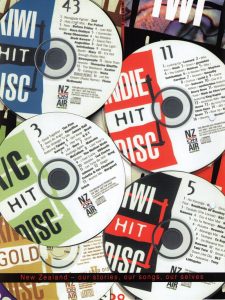 Expanding further on the Kiwi Hit Disc theme, the first Indie Hit Disc was developed for distribution four times a year – chasing that elusive goal of ‘crossing over’ to commercial radio. ‘Indie Hit Disc will give radio something new, something different, something a bit unpredictable…’ the media release promised. Fur Patrol and Darcy Clay featured on the first one. NZ On Air joined with the RBA (the radio industry), RIANZ (major record companies), APRA (songwriters) and the Musicians Union (performers) in establishing the Kiwi Music Action Group, which duly launched NZ Music Week. Originally solely a radio promotion it provided the base for the enduring annual NZ Music Month each May.
Expanding further on the Kiwi Hit Disc theme, the first Indie Hit Disc was developed for distribution four times a year – chasing that elusive goal of ‘crossing over’ to commercial radio. ‘Indie Hit Disc will give radio something new, something different, something a bit unpredictable…’ the media release promised. Fur Patrol and Darcy Clay featured on the first one. NZ On Air joined with the RBA (the radio industry), RIANZ (major record companies), APRA (songwriters) and the Musicians Union (performers) in establishing the Kiwi Music Action Group, which duly launched NZ Music Week. Originally solely a radio promotion it provided the base for the enduring annual NZ Music Month each May.
1998
In January 1998 Nicole Gilbert started as NZ On Air’s first radio ‘plugger’, a new concept role. Radio pluggers became Phase Three, their numbers increasing then contracting as the nation’s numerous independent stations were swallowed up by the two major radio networks. Other well known NZ On Air pluggers have included Camille Guzwell and Alex Behan, and today former EMI staffer Jeff Newton has the role.
“I was the luckiest girl in lucky land to work for NZ On Air as the tide was turning for NZ music on NZ radio in late 2000. ‘Who?’ turned into, ‘We want more,’ and almost overnight. Take a bow Anika Moa, Brooke Fraser, Scribe, Pluto, P-Money, Evermore, Nesian Mystik (and a hundred more) – brilliant young songwriters who changed the way we hear our music. All of a sudden we had flesh and blood artists who worked hard and wanted success, not impersonal phone interviews with some disinterested international one-hit wonder. Regional radio stations didn’t know what hit them – especially early on when I travelled with Anika Moa. Her confidence, talent, and extremely foul mouth opened a lot of doors (and probably closed a couple, amirite Anika?!) It is a privilege to have been part of the shift in mentality from quota to quality.” – Camille Guzzwell
2000
The new millennium brought big changes on the back of a major arts funding boost, provided by the new Labour Government. The Cultural Recovery Package, which totaled $84M, included establishment of the NZ Music Industry Commission. NZ On Air’s budget for the promotion of NZ music swelled from $2M to $3.8M and the first NZ Music Month took place in May 2000.
“It wasn’t until 2000 when the budget was doubled that I said to my boss that I couldn’t fulfill all aspects and the job should be split, so I could look after the music aspects and someone else the radio parts. So from 2000 I became the NZ Music Manager.” – Brendan Smyth
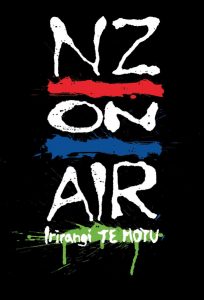 Phase Four initiatives announced in July included $1M towards the recording and promotion of albums at up to $50,000 each (to be matched by the record company), and another $200,000 for radio singles by 40 new artists at $5000 each (unmatched). The media release was headed ‘Let’s make hits’. Plugger numbers also rose from one to three and Brendan Smyth coined the prophetic (albeit only finally with Lorde in 2013) term, ‘bedroom to Billboard’ .
Phase Four initiatives announced in July included $1M towards the recording and promotion of albums at up to $50,000 each (to be matched by the record company), and another $200,000 for radio singles by 40 new artists at $5000 each (unmatched). The media release was headed ‘Let’s make hits’. Plugger numbers also rose from one to three and Brendan Smyth coined the prophetic (albeit only finally with Lorde in 2013) term, ‘bedroom to Billboard’ .
“Phase Four grew from the home-truth that commercial radio plays the hits. Therefore if we are to have more NZ music on commercial radio, then we need more NZ hits, explained then NZ On Air chief Jo Tyndall. “The idea is to get that ‘bedroom to Billboard’ progression working. In countless bedrooms around the country, kids dream of making the cover of Billboard magazine. NZ On Air’s Phase Four is about helping to make it happen.
“We’d got over that kind of anxiety about putting money into recordings – I had done a lot of work on how we could mitigate our broadcast risk.” – Brendan Smyth
2002
Tuesday March 26, 2002 was a momentous day for popular NZ music with Broadcasting Minister Marian Hobbs announcing the ‘voluntary’ NZ Music Code for commercial radio – to reach and maintain an average 20% NZ music by 2006. It had taken two years of discussions, and RBA director David Innes said the code was being adopted after Ms Hobbs made it clear she would consider regulation if the industry did not act. “So it isn’t quite a gun at the head but it is certainly strong encouragement.”
Ms Hobbs said the local music industry needed to be supported, the Code/quota was about encouraging people to buy records and help musicians succeed here and overseas. National’s broadcasting spokeswoman Katherine Rich said Ms Hobbs’ ‘veiled threats’ to broadcasters and the imposition of a quota as a consequence could harm NZ trade. From just over 11% in the December prior, the year ended with 15% NZ music playing on commercial radio, 2% ahead of the industry’s pledge.
TV2’s midnight-to-dawn music show M2 swallowed a quarter of a million of NZ On Air’s music budget over the year, radio programmes almost a million. Phase Four album funding totaled $1.1M, international marketing support going to Bic Runga’s ‘Beautiful Collision’, Goodshirt’s ‘Good’, Nesian Mystik’s ‘Polysaturated’, ‘The Alphabetchadupa and Garageland’s ‘Scorpio Righting’.
2003
12 years after the funding of music videos began, NZ On Air celebrated the milestone 1000th clip. Actually, by the time they got around to the actual commemorative event, a brilliant celebration at Auckland church venue St Matthew In The City on October 30, the number was closer to 1100. Between the record company types, TV and radio broadcasters, video-makers, music agencies, media, and pop stars about 500 attended.
It was a time of levity, fun and optimism and in the spirit of the time Brendan Smyth’s speech included a bunch of ‘special awards’. Murray Cammick was up first for the Audacity Award (see 1991 for the why). Nigel Streeter and Head Like A Hole won the Outrageous Award, for making the only NZ On Air-funded music video to go all the way to the Broadcasting Standards Authority (Fish Across Face).
2004
The six CD Kiwi Gold Disc III, again covering the 30 years from ’65 – ’95 and featuring songs that didn’t make it onto either of the two earlier collections was released in May. Kiwi Gold Disc III kicked off with Peter Posa’s classic guitar tune The White Rabbit. Almost a full decade later Peter Posa’s ‘White Rabbit: The Very Best Of’ album won the NZ Music award for being the Highest selling NZ album of the 2013 year.
A funky new logo appeared on funded videos, the combination of an earlier hip hop art-inspired dripping design by Askew and the refinement of The D4’s Dion Palmer who deconstructed that logo with the aid of his grandmother’s calligraphy pen.
In July the Music Industry Export Development Group produced a report titled Creating Heat – Tumata Kia Whita!, based around a strategy called ‘NZ Out There’, which proposed a three-phase grant programme to export Kiwi music and musicians.
2005
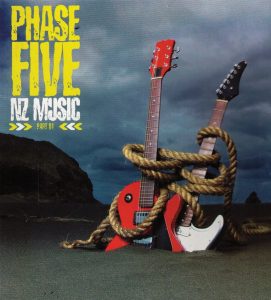 In response to the Creating Heat report from the MIEDG the Minister for Economic Development, Jim Anderton, announced $5.4 million ‘to promote contemporary music exports’ as part of the 2005 Budget. $3.4M (over four years) went to a new NZ On Air programme called Phase Five, with $2M going to the NZ Music Industry Commission for three years of the proposed ‘NZ Out There’ scheme.
In response to the Creating Heat report from the MIEDG the Minister for Economic Development, Jim Anderton, announced $5.4 million ‘to promote contemporary music exports’ as part of the 2005 Budget. $3.4M (over four years) went to a new NZ On Air programme called Phase Five, with $2M going to the NZ Music Industry Commission for three years of the proposed ‘NZ Out There’ scheme.
Brendan Smyth described Phase Five as more of an international airplay strategy aimed at infiltrating international radio and music media. The rationale given for funding the domestic broadcasting agency in this way was that the Phase Five strategies “…will drive up our domestic industry’s broadcasts of, and investment in, NZ artists and repertoire.”
BMG had merged with Sony the year before and in 2005 the ‘little major’ FMR NZ was not far from closure.
2006
Phase Five, NZ On Air’s new offshore scheme went live at the beginning of 2006. It was questionable whether it was within NZ On Air’s mandate to get involved with such international promotion, indeed the Ministry for Culture and Heritage challenged it, with Crown law solicitors exercising themselves over the legality.
“In 2005 the radio play was up over 20% – so there was a sense of our wondering, ‘What’s next?’ – and the mood of the time was export, export, export. We wanted to help and I came up with the Phase Five idea which was to try to get traction, or notice for NZ music, through broadcasting internationally – so try to get songs played on the radio in America, in Australia and in England.” – Brendan Smyth
2007
With Phase Five NZ On Air took on a collaborative role alongside NZMIC by funding a variety of international marketing ploys; sampler CDs, trade press advertising, promo and plugger campaigns, and producing radio shows showcasing NZ music for international radio syndication. Part of the strategy was developing an international radio and music media ‘tastemaker’ network, as well as attending the world’s major trade shows, mostly in tandem with the NZMIC’s Outward Sound scheme.
“When Outward Sound started in 2005 the NZMC was involved in two off shore trade events, MIDEM and SXSW. Our first joint project with NZ On Air was CMJ in 2007 which had a focus on college radio in the US, the next was The Great Escape and BIGSOUND in 2009. In 2011 the music agencies took a more focused look at their international programs and it was decided that the NZMC was a better fit for those various trade events and we took over the reins from then.” – Gary Fortune, NZ Music Commission (previously named NZ Music Industry Commission)
Since inception of the scheme in 2000 over one million copies of the Phase Four-funded albums (135 funded, 80 released) had by now sold locally (over Platinum in the States). Always keen to celebrate such milestones, a Platinum-Plus event was held at the Auckland Museum.
2008
In March NZ On Air called for tenders to review its domestic funding schemes and got as far as commissioning former EMI head Chris Caddick before being obliged to put that review on hold. The commercial radio and record industries were at the time about to go to battle before the Copyright Tribunal over royalties paid by radio for the right to broadcast copyright recordings. Both sides were reluctant to participate in an NZ On Air review then for fear of queering their pitch in court.
Brendan Smyth says they had no option but to defer until after the Copyright Tribunal ruling was handed down and NZ On Air instead asked Caddick to review of their international (Phase Five) programme, originally planned to follow the domestic policies review.
The KiwiHits online platform was developed.
“I started with NZ On Air as their ‘regional radio plugger’ in 2002. In those days many regional stations still ran their own playlists, and all of their NZ music airplay counted towards the airplay charts. So I plugged NZ repertoire to stations all over the country, from Invercargill to Whangarei. In the 12 years since the majority of those stations re-branded as local More FMs (mid 2000s) and the music programming was centralised in Auckland… so that job eventually disappeared. I went back to commercial radio for a few years, then returned to NZ On Air in 2008 as Brendan’s Assistant NZ Music Manager. The timing turned out pretty well as it happened, because we were on the brink of some major changes.” – David Ridler
2009
In November 2009 Chris Caddick delivered a review of NZ On Air’s international (Phase Five) programme. Finding the scheme to be little understood and lacking measurable goals his recommendations were to cut all of NZ On Air’s offshore promotional activity in Europe and the U.S. and focus any remaining activity just on Australia. In bowing out of the international trade show role NZ On Air passed one-off funding of $200,000 into the budget of NZMC, specifically to allow that organisation to continue the relationship with CMJ (college radio).
“I still believe that those of us involved in the future of music have to be involved in the exporting of NZ music, it’s a sine qua non if you like. It’s in the dna of the music industry to think of the world as the marketplace, while NZ On Air’s dna is NZ audiences. Phase Five was in a sense ahead of its time, and one day in this new internet world NZ On Air will need to think internationally. – Brendan Smyth
2010
It proved to be quite an eventful year, what with one thing then another. The Phase Four schemes, by now a decade old, were attracting a growing amount of negativity from disaffected artists and others – over the $50,000 album funding in particular. A lengthy article plus biting cartoon in the May issue of Real Groove magazine gave public voice to the criticism, and drew a full page response from Brendan Smyth with matching reply from the article’s author in the following issue.
In June NZ On Air’s music section celebrated the organisation’s 21st birthday with a black-t gathering at Auckland’s rock’n’roll landmark venue, The Powerstation. NZ On Air staff secretly used the occasion to let the local music industry thank and congratulate Brendan Smyth. Photos show him being presented with his own Tom Scott caricature by then Broadcasting Minister Jonathan Coleman, and Brendan wearing the ‘Heroes of the NZ Music Revolution’ medal awarded by his staff.
“It got hi-jacked, which was very humbling and amusing on the night, but it was not meant to be about me,” he says. Much enjoyed and applauded by the cross section of industry and artists present, it proved a lightning rod for further media criticism – this time of the costs of the event.
Early December saw another media flare up with news that NZ On Air staff along with a selection of radio programmers had been helicoptered to the Great Mercury Island getaway of singer Annabel Faye’s well-to-do dad, for an album pre-listening session.
“2010 was the annus horribilis. It was almost like a snowball effect. But it was the year of the 21st and also the year [I was told] of my MNZM which was pretty extraordinary – so it was a crazy year.” – Brendan Smyth
The Digital Content Partnership fund allocated $332,000 for the making of an online music sharing platform conceived by James Colman called Mixtape. Launched with little fanfare the next year, Mixtape.co.nz soon disappeared.
A full review of NZ On Air’s domestic music promotion and funding schemes had been taking place during the year and the resulting Caddick Report became public in December. It recommended an almost complete shake down of the existing programmes into one new single-focused scheme that would promote diversity and encourage new artists.
2011
In the 2011 New Year Honours announcement Mr Brendan Smyth of Wellington was made MNZM for services to music.
On July 1st NZ On Air launched its new Making Tracks music funding scheme, ‘one scheme to replace them all’. Aimed at ‘maximising audience and broadcaster awareness of music’, Making Tracks addressed the new online music acquisition reality with 60% funding allocations to be aimed at commercial radio and 40% aimed at alternative (and online) platforms. That ratio is scheduled for annual review. Jeff Newton joined Tania Dean as NZ On Air’s plugger with a new digital domain agenda.
“The role is basically the same as it’s always been (getting airplay for NZ music at broadcast media), but I think the biggest change is the use of online and social media stats and how support from other media outlets (print, online and other broadcast outlets) can assist radio airplay. The audience still discover new music at radio, but they then go online to consume the songs they love, so the radio content directors will check out artist online activity to see if there’s an engagement with an audience and the size of that audience. A good online engagement can compel the radio stations to add a song they’re unsure about.” – Jeff Newton
Also in July the enterprising and determined Robyn Gallagher started her mission to watch and review every music video funded by the organisation and made from 1991 to 2011. It’s called 5000 Ways To Love You – Exploring the world of NZ On Air music video funding. (http://5000ways.co.nz/)
The Digital Strategy funding of $287,000 was allocated for the making of an online video game called Music Manager. Launched in May 2013 Indie Music Manager looked like 2011 thinking, and was promptly dissed by pretty much everyone, including the bands unfortunate enough to have been used as models.
2012
NZ On Air’s Digital Media Fund was formally established ‘to drive a new way of suporting digital media content’. New music discovery site Theaudience.co.nz officially launched in May. Designed to allow local artists to showcase new and unreleased music, and be a socially interactive music hub, it was quickly embraced. The website was funded by NZ On Air with an initial grant of $217,000 and had the carrot of a $10,000 Making Tracks grant for making a video and further recording of the track going to the most popular song every month, regardless of commercial appeal or genre.
“Making Tracks is a tiger by the tail. It’s hugely energy consuming because it is a monthly scheme, 10 times a year. Very, very labour intensive.” – Brendan Smyth
2013
NZ On Air digital media budget funding of $380,000 provided in 2012 resulted in the launch of audioculture.co.nz, a new website to retain and showcase the history of NZ music, in mid 2013. Helmed by music entrepreneur Simon Grigg, AudioCulture has since been busily working with musicians, music historians and others to digitally capture articles, reviews, interviews, images, recordings, music videos, discussion and commentary from fans and artists.
“Simply put, without NZ On Air and Brendan Smyth there would not be an AudioCulture. Brendan and I first identified the need for something like AudioCulture many years ago and as I firmed up the concept around 2010 Brendan was central to the discussion. His wisdom, his contacts and his faith were crucial factors in our path to success. Brendan guided the AudioCulture concept through the seemingly impenetrable maze that is – at least to we Aucklanders with a simple recording industry background – Wellington bureaucracy. And, very importantly, it was he who found us our funding. I could add another 1000 words on the ways he has helped me over my career but that may have to wait.” – Simon Grigg
2014
Earlier this year NZ On Air commissioned consultant, Eveline Van Der Steen (ex-Armada Records in The Netherlands) to review their online strategy and make recommendation about how to step things up and make the most of online opportunities. She suggested a move away from the generic grouping of tracks under the ‘new NZ music’ banner to genre-based presentations within the organisation’s online spaces, including the Kiwi Hit Discs. She further recommended a more active use of social media platforms to promote NZ music straight to the public rather than just broadcasters and the creation of playlists on the likes of Spotify, Youtube and Soundcloud.
While no official big bash celebration event is planned to mark the organisation’s 25th anniversary, a series of related promotions are expected through to July 2015.
- audioculture
- brendan smyth
- camille guzwell
- creating heat report
- david ridler
- digital media fund
- funding schemes
- gary fortune
- jeff newton
- kiwi hit disc
- kiwi music week
- kmag
- making tracks
- music manager
- music video funding scheme
- nz music month
- nz on air
- october/november 2014
- phase four funding
- phase one funding
- timeline

